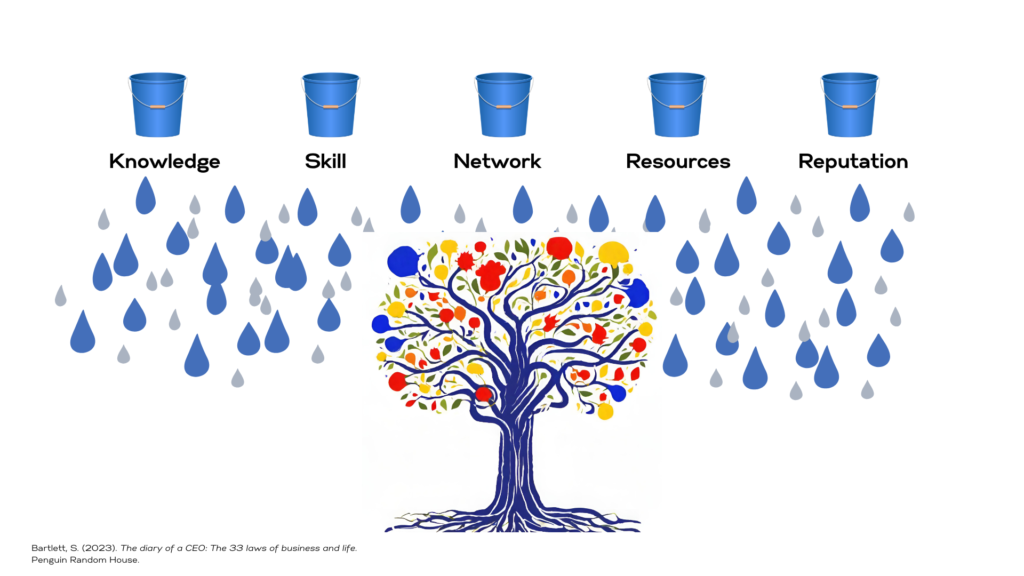To seek to understand our human condition and calling, woven into an infinite story, compels us toward metaphors and symbols that give meaning to truth which exists outside of comprehension.
We encounter parables of sowing seeds, lessons of planting and watering, and examples of farmers and carpenters. If we are led to grow and create, to participate in building a more beautiful life, according to our unique talents, then we are also dependent upon increase from a sovereign source, which grants abundance not for individual ease but collective empowerment.
In his first work as an author, Steven Bartlett writes of 33 laws for prosperity in business and life, and the first law is to fill our buckets in the proper sequence. Bartlett deftly contends that we have five buckets — knowledge, skill, network, resources, and reputation — and the fullness of these buckets determines our dreams and paths to achieve them.
What are we doing to fill our buckets?
How do our buckets pour into that which is purposed for the health and prosperity of all?

Young people and teenagers are wise to their environments and are speaking up not only for education reform but also to make the case that mental health is a key challenge in classrooms. The New York Times reported on two surveys, and nearly 60 percent of teenagers rated K-12 schools’ performance as poor or fair; they also self-report being “bored,” “tired,” and “pressured” in school. Certainly, the vision is to create learning environments in which students feel inspired, energized, and supported, but perhaps an objective first step in that direction is to seek students’ insight regarding what constitutes quality education and let their ideas spark a revolution.
Additionally, nurture rather than rigor is valued as a sustainable resource that will prepare students for the future. In a late 2023 survey of 1,000 likely voters, respondents were asked about potential solutions to these educational barriers, and 49 percent suggested individual learning plans and additional counseling, social-emotional, or mental health support in schools. Only 20 percent suggested “more testing,” while 33 percent suggested “setting high standards.” Hence, future research and progress hinge on understanding if and how more support services, such as holistic growth programs and tutoring as a universal resource, would translate to durable learning outcomes and quality of life.
Finally, just 25 percent of teenagers say they feel prepared for their futures, and that sounds like a call to action. The opportunity to intervene in the systemic failure to adequately support and prepare children and young people for their futures is not simply the right thing to do, it is our only option if we are determined to build a better world.
From which of our buckets can we contribute and co-create the solution?




